Riding on innovative visual storytelling that celebrates India’s rich and diverse artistic traditions, Tara Books turns 28, proving why it pays to be a bold and brilliant independent publisher
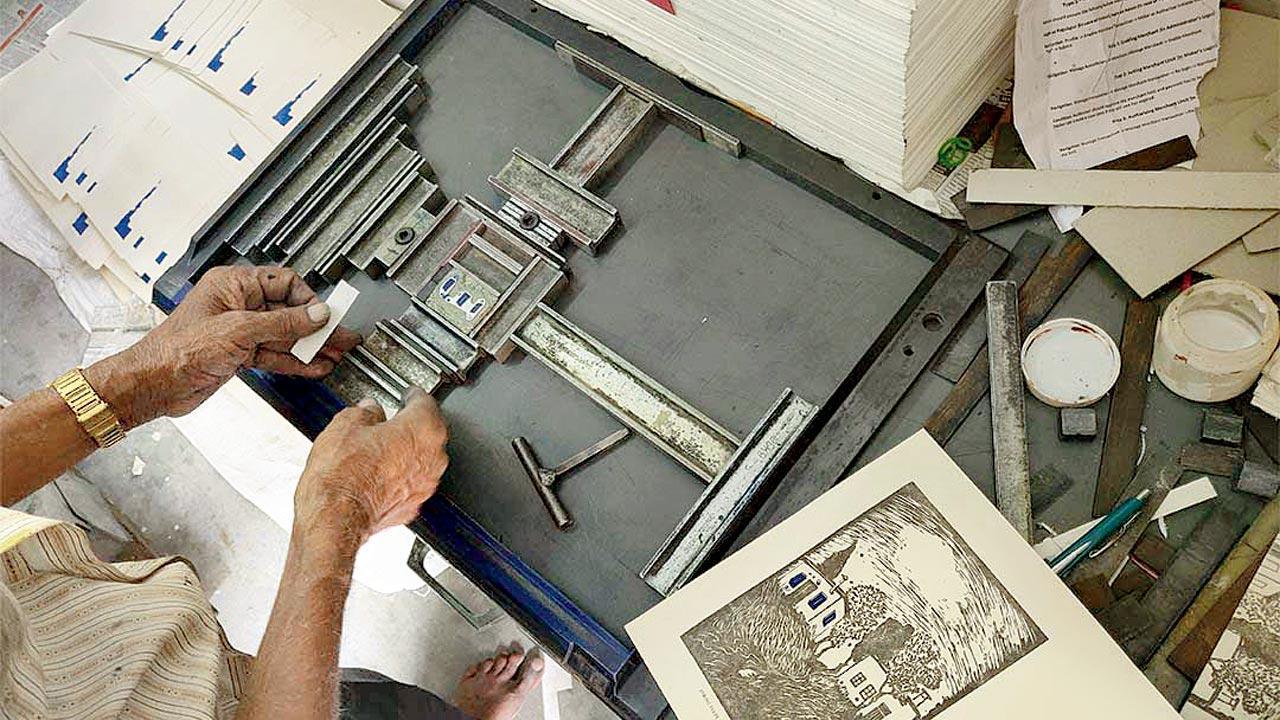
1. Letterpress getting ready
If this article was about a script for a 1970s Bollywood film, this writer would’ve been tempted to headline it, 'Geetha aur Gita'. Alternatively, if it was made in the mid-1990s, it would be about the little guy who dreamt big.
ADVERTISEMENT
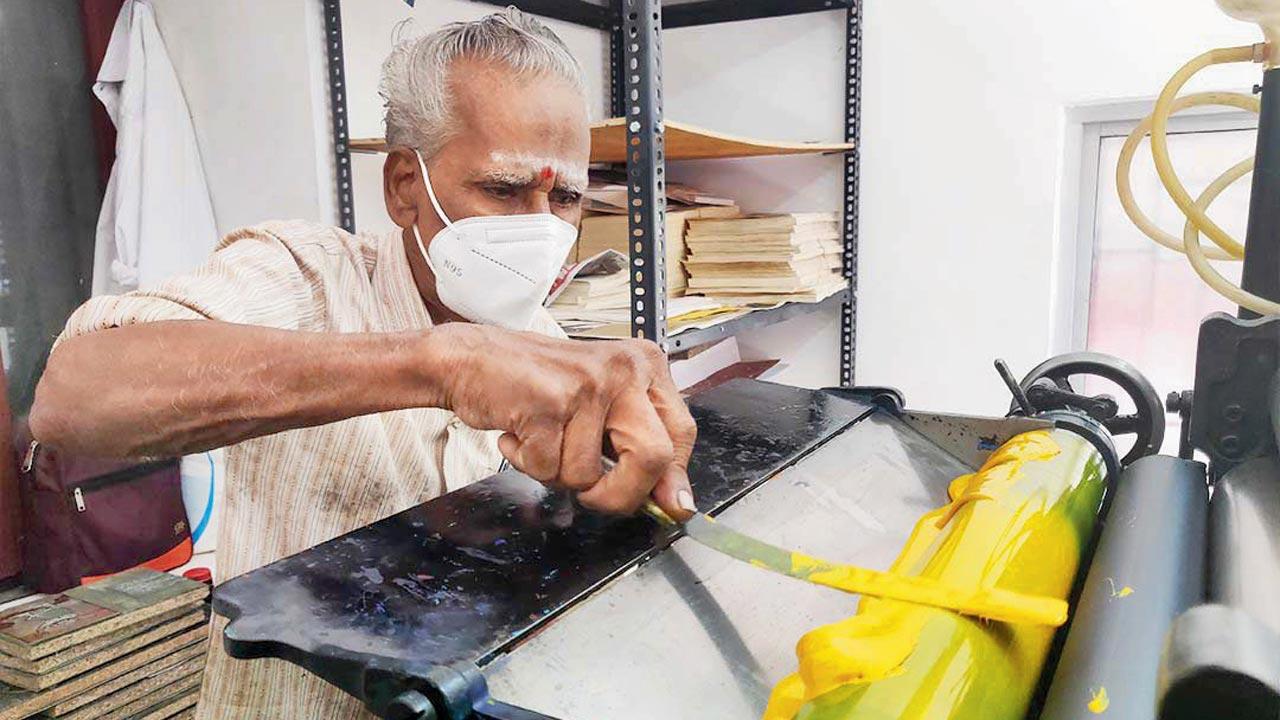
2. Letterpress colour
Ballsy independent publisher Tara Books (tarabooks.com), now 28, entered the scene when the big daddies of publishing from the West had staked claim in Delhi’s reading circles. Since their first title, Mala: A Women’s folktale, hit bookshelves, the Chennai-based indie publisher has consistently broken new ground. “Gita Wolf and I were part of the feminist group, Snehidi. One day, while discussing the absence of children books set in our context, Gita wondered if she ought to start a publishing house that did this. She was interested in publishing picture books, which, until then, were not widely available across India,” recalls V Geetha, co-founder. “Subsequently, it became clear that pictures can communicate across communities, and make for meaning in unexpected ways.”
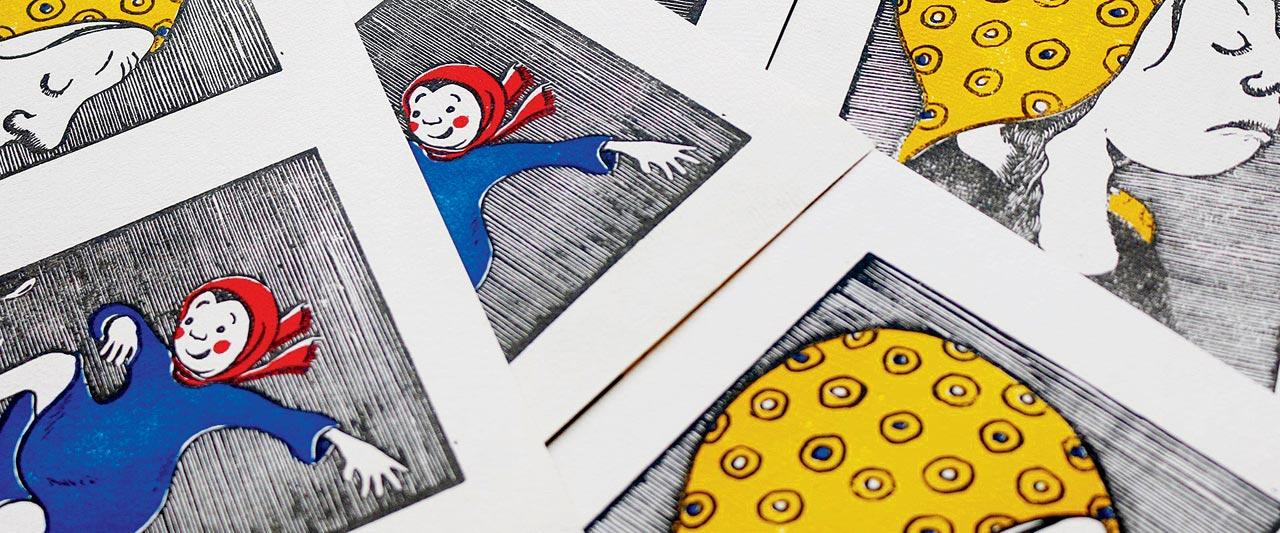
3. Letterpress printed pages
There was no plan when they started, “But Gita’s publishing intuition, which discerns a book through barely an image and snatch of a story, led her along. Over the years, we evolved organically, and built a team, a loose collective of people with shared interests: Helmut Wolf, one of the directors at Tara, helped us break into publishing technology, and provided valuable visual advice, in our early years. I am the in-house historian and ensure that we locate our books in defined contexts, and account for where we and our creators come from. I also oversee the editorial process,” she elaborates about the core team. Others like Anushka Ravishankar, who Geetha calls ‘our Dr Seuss’ was a pioneer in humorous and absurd verse, drawing from Indian subjects. She later founded her own publishing house, Duckbill, but remains one of their bestselling authors. Rathna Ramanathan introduced the team to the possibilities in book design while the globally acknowledged Arumugam grew his book-making skills along with theirs—from silkscreen printing to risography.
Edited excerpts from an interview with V Geetha.
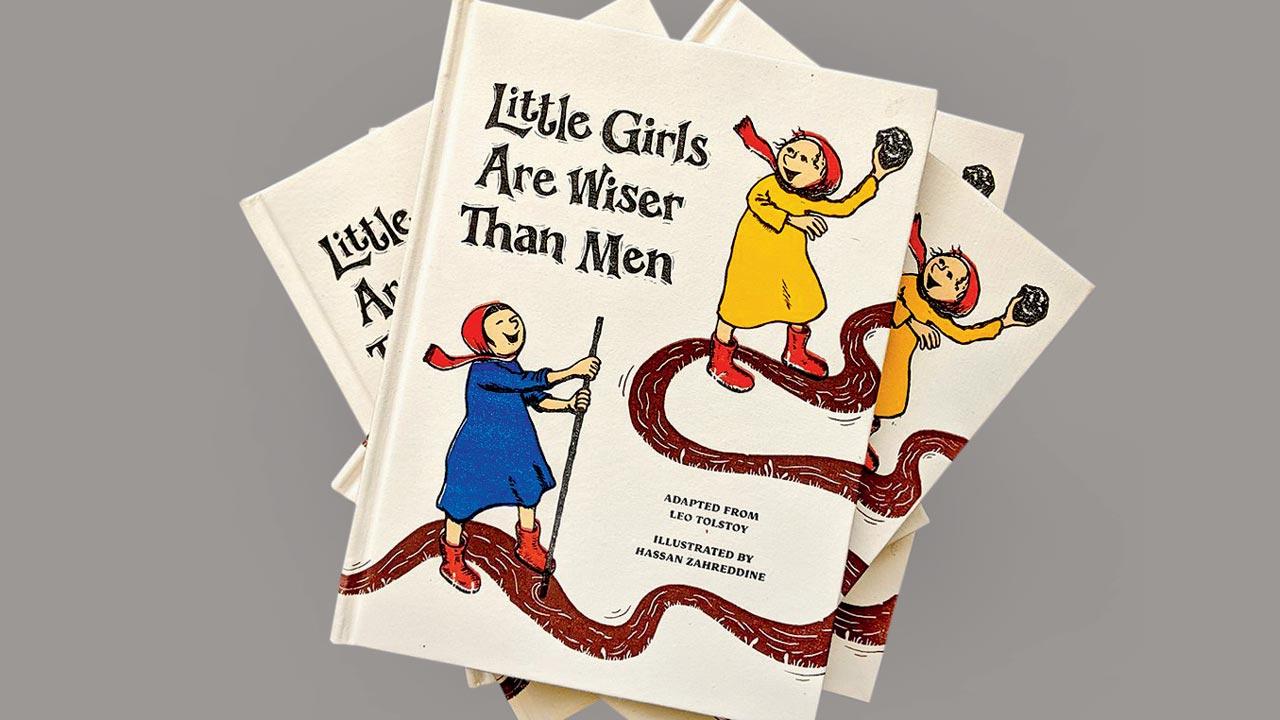
4. Final book cover
Tara Books is all about engaging with pictorial storytelling, often using lesser-documented Indian art forms. How did this become your core?
Gita’s interest in the communicative power of art has guided our publishing. We decided to work with indigenous art traditions fairly early, from the early 2000s. And were thrilled by the possibilities that the artists’ work held. We researched these traditions, set out to identify artists, did workshops with them, and came to work at a publishing model, which relies on dialogue and in some instances co-creation. We have published art from these traditions: Pardhan Gond, Mithila, Patachitra, Patua, Mata-ni-Pachedi, Bhil, Warli, Rathwa, Meena and Kalamkari.
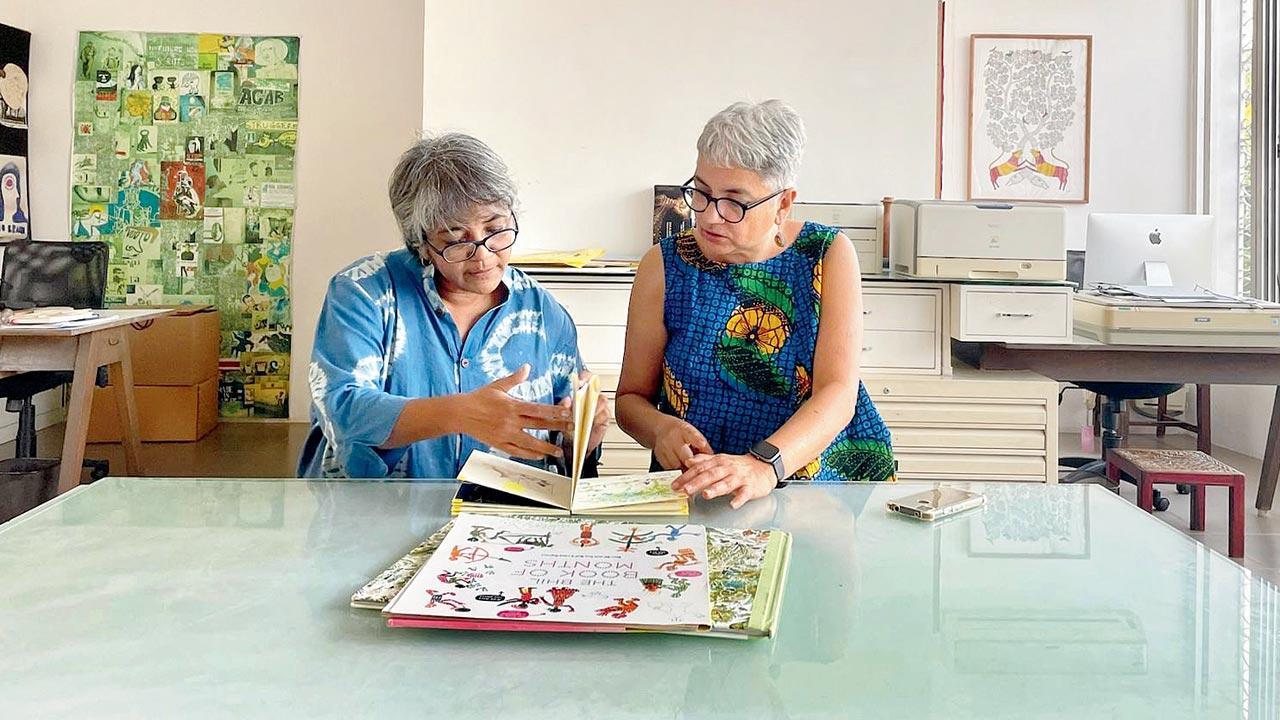
Co-founders V Geetha (left) and Gita Wolf, lead a collective of writers, designers, illustrators, artisans and bookmakers
Many of our artists come from a place where art integrates with everyday life; our title, 'Origins of Art: The Gond Village of Patangarh', shows you how this is, in one particular instance. Their art communicates world views and life worlds that we seldom take seriously. For us, this art is not marginal; we see the artists as our contemporaries, not members of an exotic other space, but as occupying one that is coeval with our own.
Between Memory and Museum: a dialogue with folk and tribal artists is a compendium of the artists’ views on history, memory, the present, which they have communicated through eloquent drawings and images. Women artists from these traditions offer their own take on what it means to be female and an artist; Hope is a Girl Selling Fruit and Drawing from the City, as well as our more recent title, The Women I Could Be are examples of this.
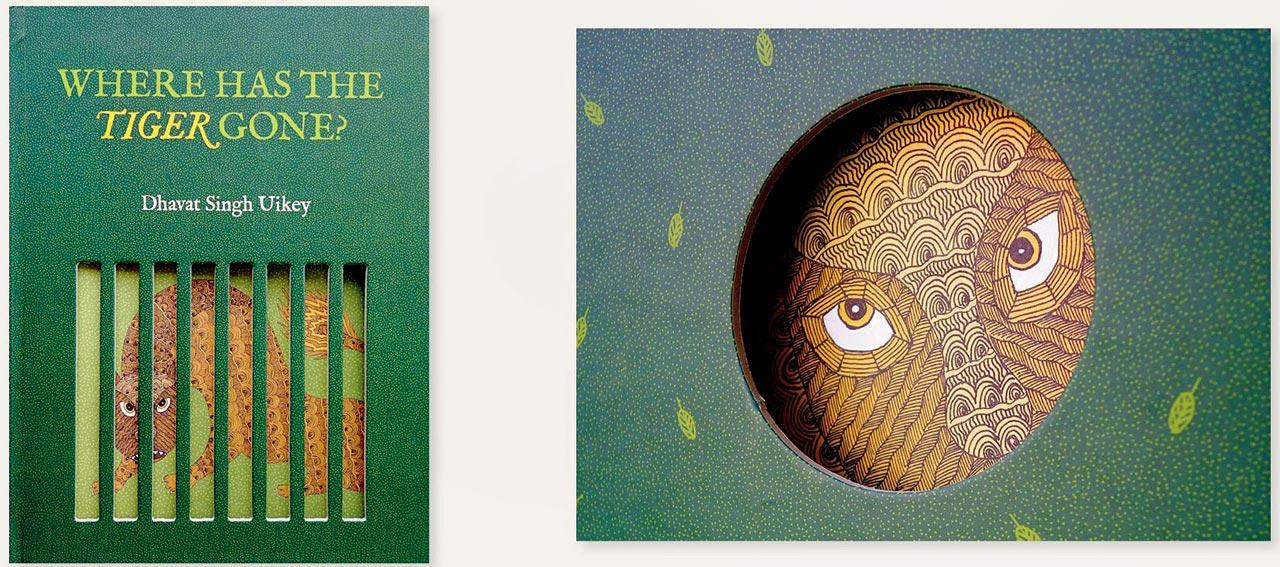
Where Has the Tiger Gone? uses stunning design to retell the traditional Gond tales about the tiger, illustrated with symbolic art that captures not the mythic status of the great beast, but also a time, place and relationship that is lost to us, says the team
Your commissioned collaborators are an eclectic mix—from Gond artists to IIT professors. How do you ensure people from varied backgrounds and experiences are able to sync with the final idea?
Conversation, communication, involving all concerned in the entirety of the book creation and making process—artists visit our printing unit, designers sit down with artists and authors with designers and production sits down with all. But equally important has been trust, built over the years: just as we trust the immense power of indigenous creative processes, our artists trust our skills as editors, designers and book makers. The sync, as you call it, happens because we are all excited by and committed to the book as an important cultural object.
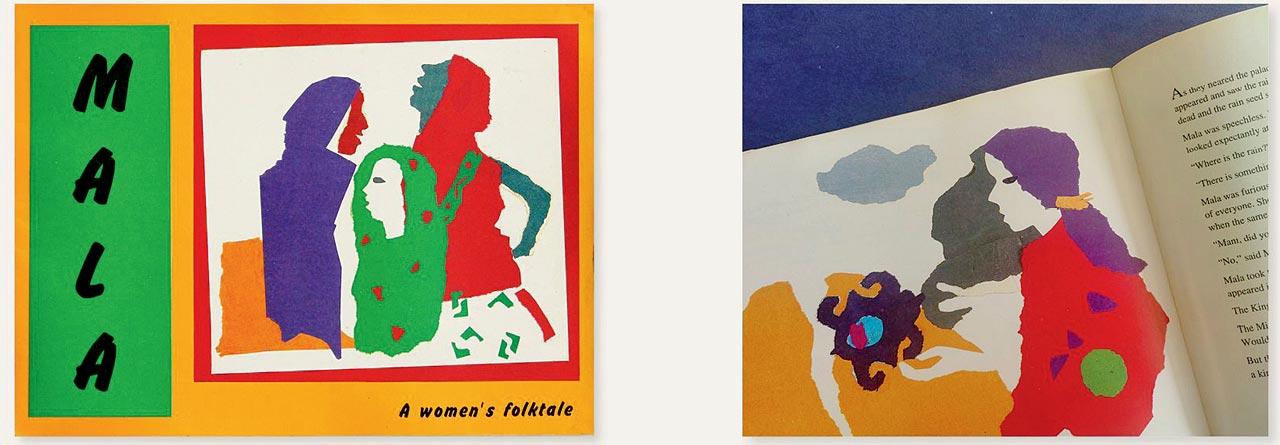
Mala: A Women’s folktale, their first title from 1994
In your books, storytelling organically flows from text to images. Could you take us through this execution.
Our designers set the visual coordinates for the book—they establish relationships between text and images in ways that guide the reader; help create unexpected meanings. Plenty of thought, conversation and reworking of art and text leads to quiet, meaningful design. And here, our publishing philosophy has proved useful—neither the text nor the art by itself is viewed as primary. Rather, it’s the relationship between them, set by the designer and equally by the production team, that is. The production team makes suggestions about the paper to be used, the printing, and the likely outcome of design choices. It’s important for all involved to agree, and engage in give-and-take.
Members of the mid-day newsroom love your fluke books, rare prints and innovative stationery ideas. How did these become integral part of the stable?
Our print workshop generates what might appear as “trails” or “mistakes”, but we see them as valuable constituents of yet another creative process. We recompose these into interesting stationery. It is wise recycling as well as a source of income for the book artisans. The art prints feature images from our books; when we started doing these, we viewed them as generating work for the artisans, a source of income for the artist, printer and publisher. But over the years, they have become collectibles. So, we have now come to curate them, arranging prints around a theme, publishing them as a set, and so on.
What’s coming up?
We have embarked on a set of new projects to do with Indian craftspersons and their work, and this is making us return to core ideas of art, craft and making but from the point of view of how craftspersons see their life and work.
There’s another project where authors look at the lives of children in diasporic contexts, from the early 20th century.
We have been working with textile art too, Cloth of the Mother Goddess, A Stitch Out of Time, and will be doing a lot more with cloth and block printing.
 Subscribe today by clicking the link and stay updated with the latest news!" Click here!
Subscribe today by clicking the link and stay updated with the latest news!" Click here!







